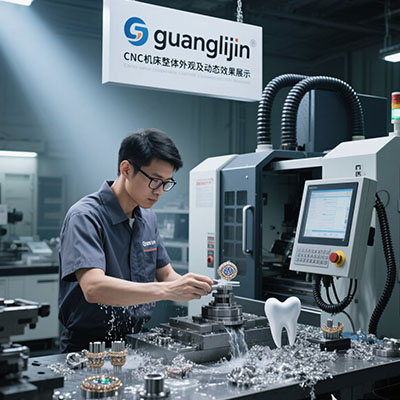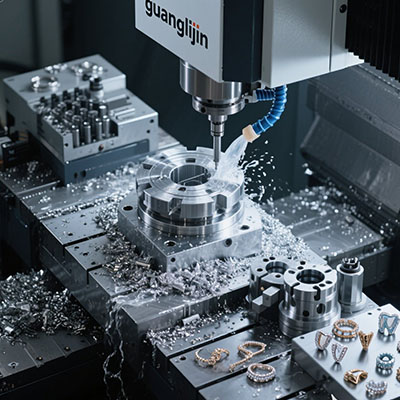4 Axis CNC Mini Mill: Precision Machining for Small Parts
The Small Part Machining Challenge
Manufacturing tiny components presents big problems. Traditional machines lack the precision for miniature work. Tolerances become incredibly tight.
Small parts often require complex geometries. Think medical implants or jewelry details. These features demand multi-angle access.
Manual repositioning introduces errors. Each handling risks part damage. This creates consistency issues in production batches.
Why 4-Axis Mini Mills Deliver Big Solutions
Compact 4-axis technology changes everything. The rotational axis enables complete part access. Machining happens in single setups.
These systems offer remarkable space efficiency. A typical 4 axis cnc mini mill fits in small workshops. This makes advanced manufacturing accessible.
According to Modern Machine Shop, mini mills reduce setup time by 60-70%. This data highlights their operational advantage.
Real Application: Custom Watch Component Production
Our team worked with a watchmaker in early 2024. They struggled with crown and bezel manufacturing. Traditional methods produced inconsistent results.
Implementing a 4 axis cnc mini mill transformed their process. The rotary capability handled complex curves perfectly. Production quality improved dramatically.
Surface finish requirements were easily met. Actually, the results exceeded their expectations. This experience demonstrated mini mill precision.
Mini Mill vs Standard Mill: Capability Comparison
| Project Type | 4-Axis Mini Mill | Standard 3-Axis Mill |
|---|---|---|
| Small precision parts | Excellent precision, perfect fit | Often oversized, less accurate |
| Complex jewelry designs | Ideal for intricate details | Limited by fixed angles |
| Prototype development | Rapid iteration capability | Multiple setups required |
| Educational use | Safe, compact, affordable | Often too large, expensive |
Getting Started: 5-Step Mini Mill Operation
Step 1: Material Selection and Preparation
Choose appropriate stock for your project. Aluminum and brass work well for beginners. Ensure material is properly secured.
Step 2: Tooling Setup and Calibration
Select small diameter end mills. 1/8-inch or smaller tools provide detail. Precisely measure tool lengths for accuracy.
Step 3: Work Coordinate System Establishment
Set X, Y, Z zero points carefully. Define the A-axis rotation center accurately. This foundation ensures dimensional precision.
Step 4: CAM Programming Strategy
Use 4-axis simultaneous machining paths. Optimize toolpaths for small feature details. Simulate programs before execution.
Step 5: Machining and Quality Verification
Run initial test cuts. Measure critical dimensions immediately. Adjust offsets as needed for perfection.
Key Applications for Compact 4-Axis Mills
These machines excel in specific industries. Their small footprint belies serious capability.
Jewelry manufacturing benefits tremendously. Rings, pendants, and detailed patterns become manageable. The fourth axis handles curved surfaces beautifully.
Dental and medical components represent another perfect application. Small implants and surgical guides require micron-level precision. Mini mills deliver this consistently.
Technical Considerations for Small Parts
Spindle speed becomes critically important. Higher RPMs maintain proper surface speeds with small tools. 10,000 RPM or greater is typically necessary.
Interestingly, rapid positioning rates matter less than acceleration. Quick direction changes improve small feature machining time. This often surprises new users.
According to MachiningCloud, tools under 3mm diameter account for 40% of mini mill tooling. This highlights the scale difference.
Essential Mini Mill Operation Checklist
- □ Verify workholding clearance during rotation
- □ Confirm proper tool length measurements
- □ Test A-axis rotation limits and homing
- □ Inspect first-part critical dimensions
- □ Check for tool deflection in deep reaches
- □ Validate chip clearance in tight areas
- □ Document optimal feeds/speeds for materials
Frequently Asked Questions
What is the typical price range for a quality 4 axis CNC mini mill?
Good desktop models start around $8,000, while industrial-grade mini mills range from $25,000 to $60,000 depending on features and precision.
Can a 4-axis mini mill handle aluminum and stainless steel effectively?
Yes, with proper tooling and parameters. However, material removal rates will be lower than larger machines. Light passes and high RPM work best.
What are the best 4 axis CNC machine brands for small part manufacturing?
Haas, Tormach, and DATRON offer excellent options. Each serves different budget and precision requirements for compact machining applications.
How difficult is programming for 4-axis simultaneous machining?
Modern CAM software simplifies the process significantly. The learning curve exists but is manageable with quality training and practice.







